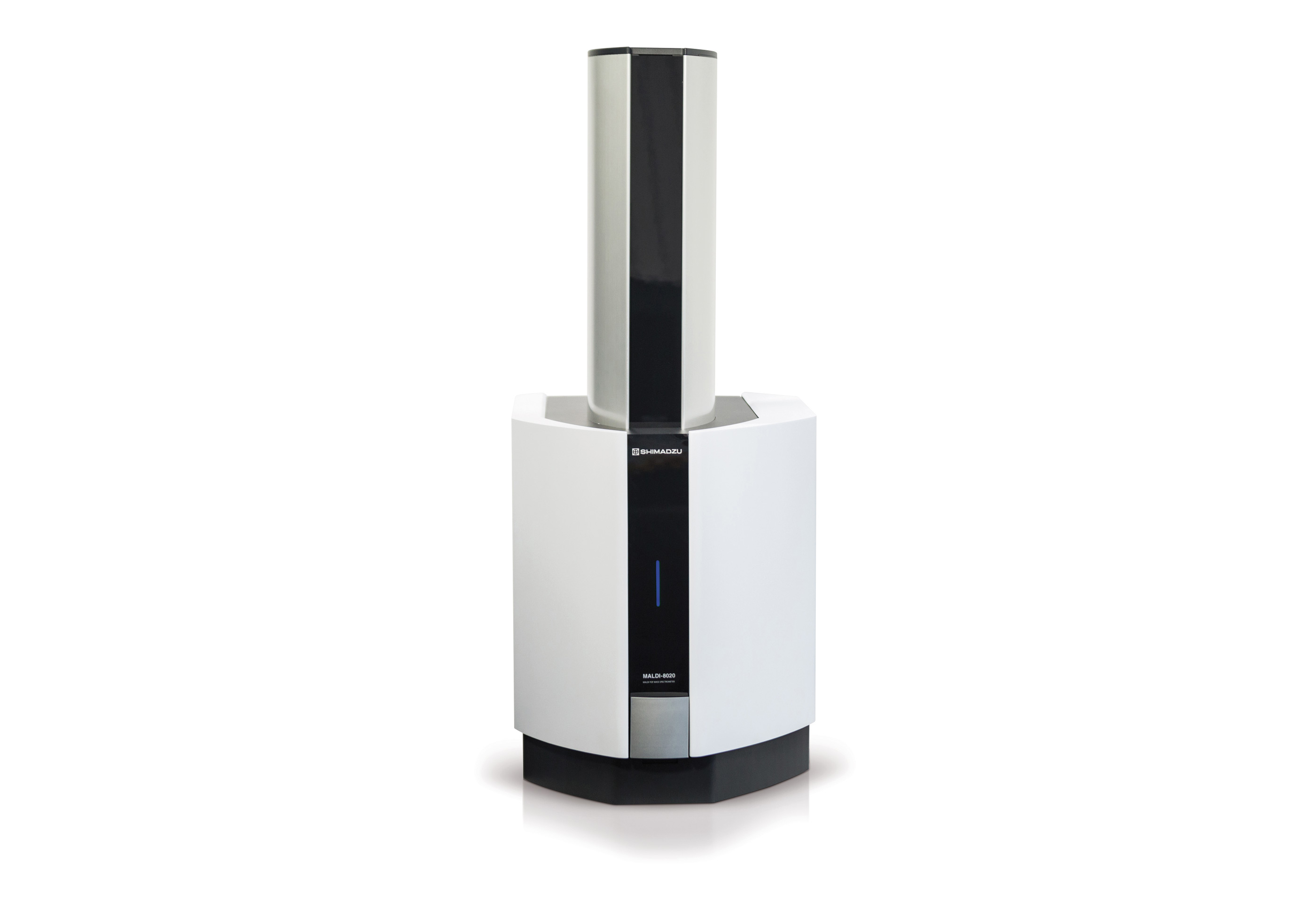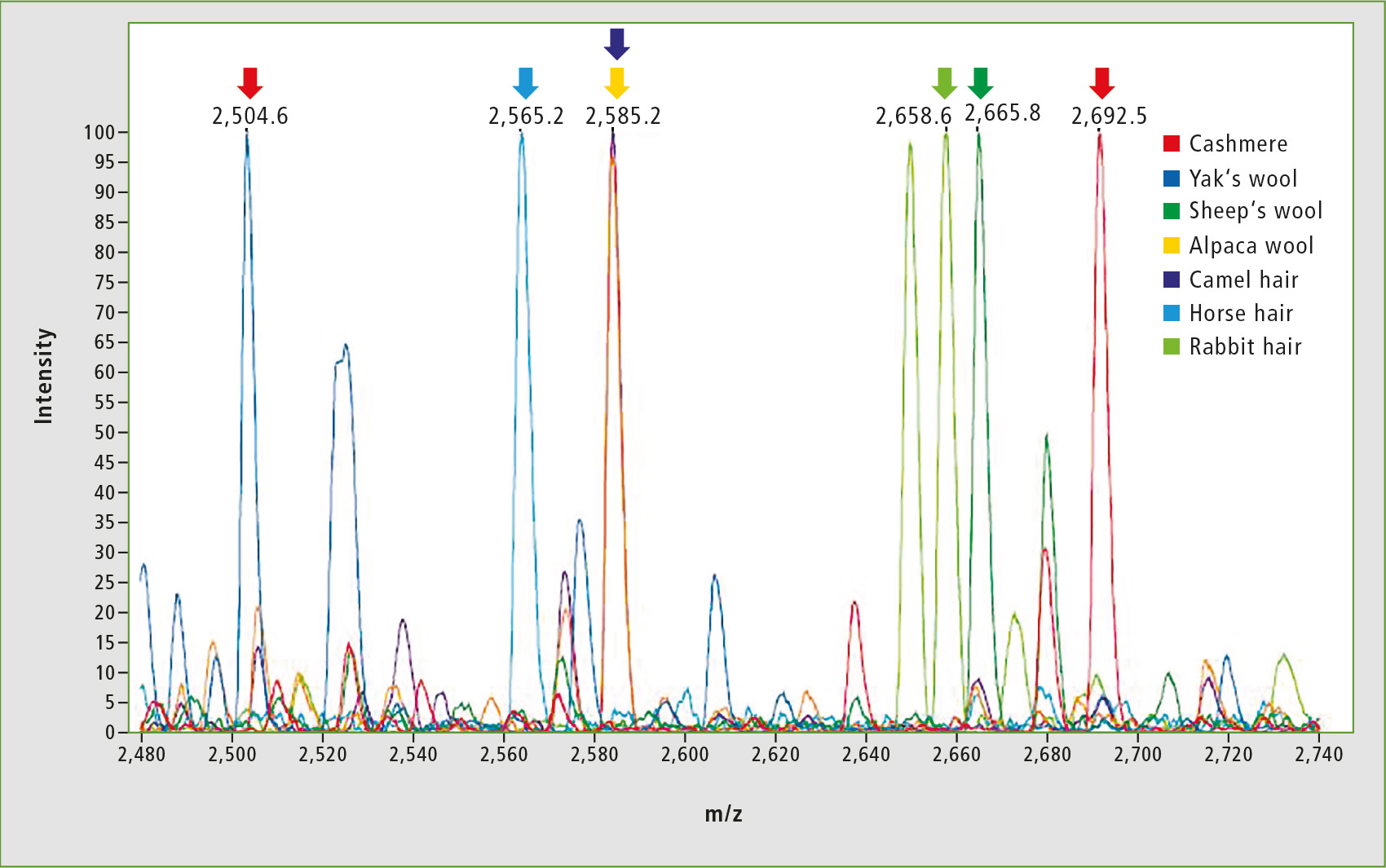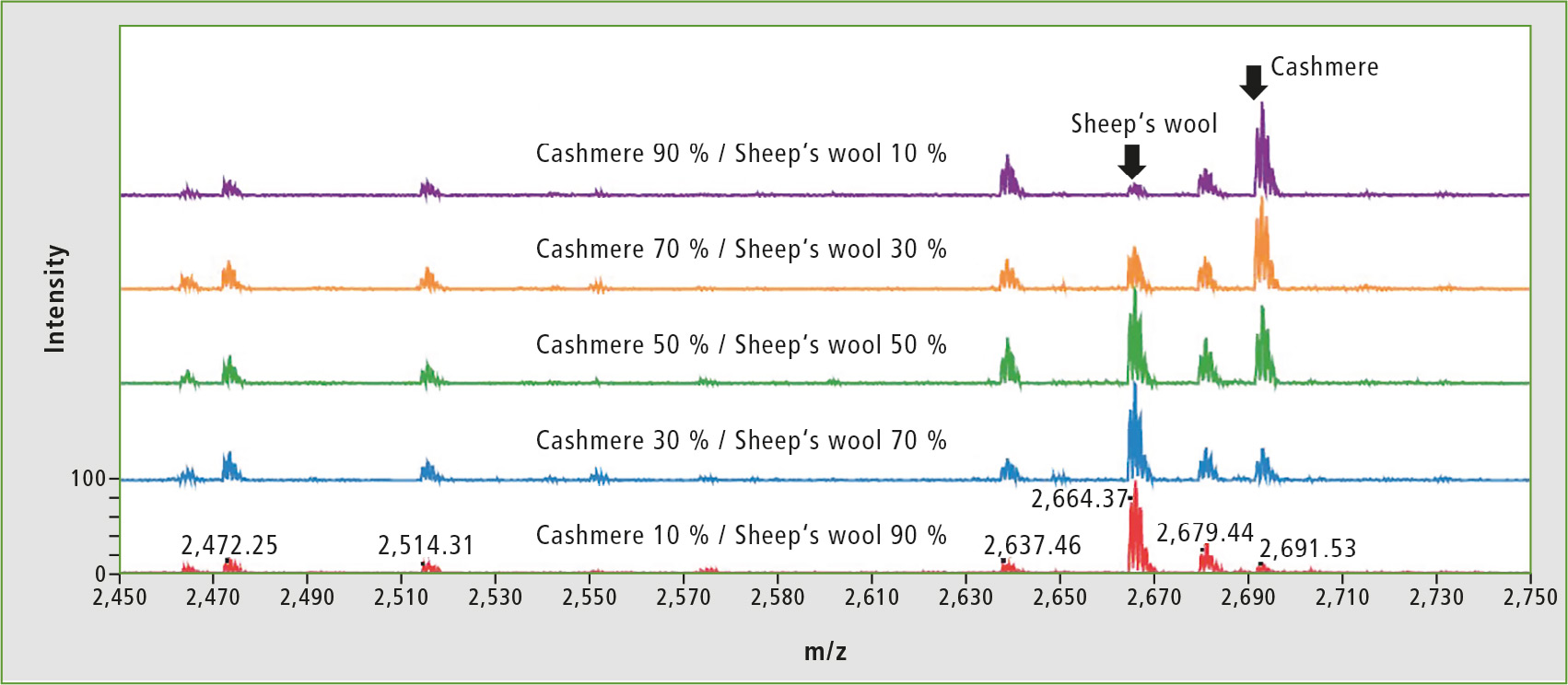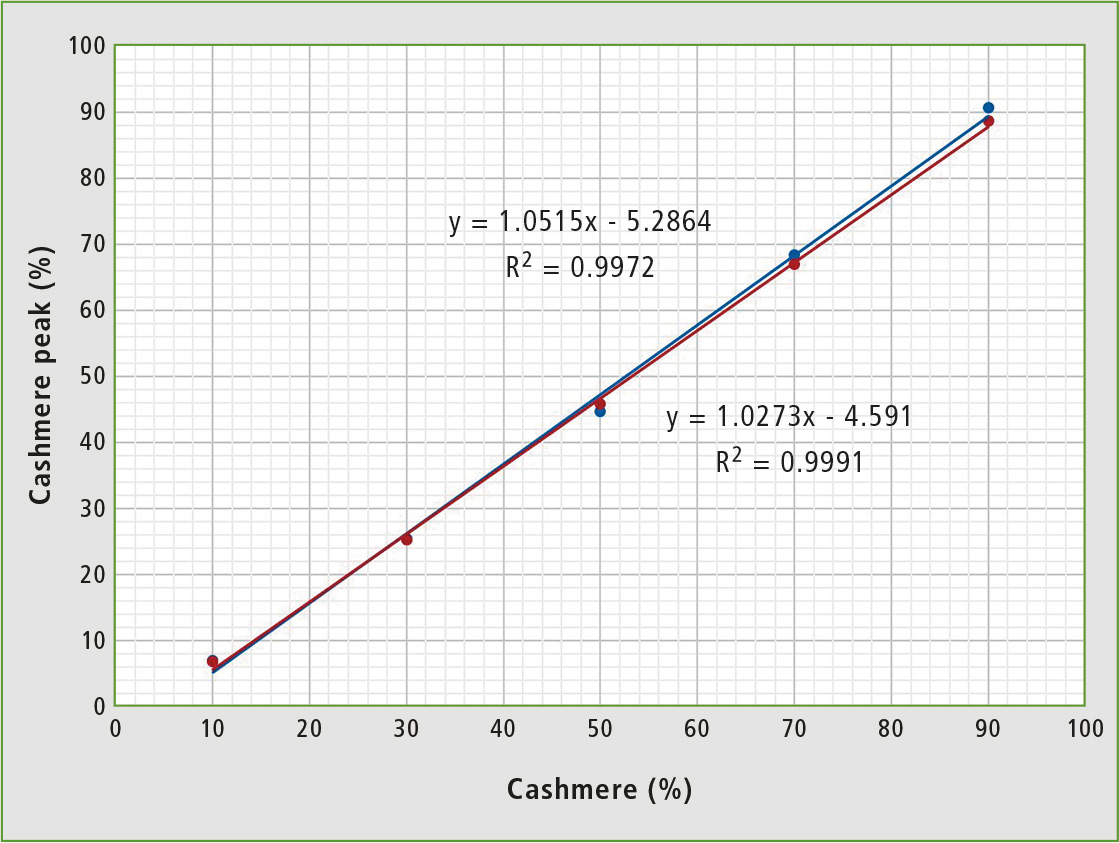Is it authentic cashmere?
Differentiation and quantification of cashmere with MALDI-MS

Whether sweater, hat or scarf – warm clothing is essential in winter. The shops offer a wide range of garments made of different materials. One luxury fabric is cashmere, coming mainly from China. The fine fiber from the under-fleece of the goat comes from the Kashmir region, situated between India, Pakistan and China.
Unlike sheep’s wool, cashmere hair is softer, smoother and one of the most expensive and valuable natural fibers. But in times of counterfeit products, how can vendors and customers be sure that cashmere is actually contained in the textile and not just written on the label?
Conventionally, evaluating the authenticity of cashmere hair has been investigated by an optical or electron microscope. Recently, the International Organization for Standardization approved a new Matrix-assisted laser desorption/ ionization-based method to analyze animal fibers (ISO 20418-2: 2018). This method also allows for quantification to confirm certain mixtures. A single hair is sufficient to determine its origin. In addition, this method also provides potential for the analysis of contaminated food to identify the cause of the contamination.
Shimadzu established this method with its MALDI-8020 Benchtop-mass-spectrometer (figure 1). Due to its compact and affordable design it is the first-choice instrument for such analyses. Fast sample stage and short pump time guarantee a high-speed analysis.
 Figure 1: The linear MALDI-8020 shows a great performance with a minimum footprint. Typical applications for the MALDI-8020 are the analysis of proteins/ peptides, lipids or hydrocarbons in life science or quality control of polymers.
Figure 1: The linear MALDI-8020 shows a great performance with a minimum footprint. Typical applications for the MALDI-8020 are the analysis of proteins/ peptides, lipids or hydrocarbons in life science or quality control of polymers.
Classical protein sample preparation
Hair fibers were broken up with a scissor or ball mill, denatured with SDS (sodium dodecyl sulfate), disulphide bonds reduced with DTT (dithiothreitol) and alkylated with iodoacetamide. After an optional separation on an SDS-Page, tryptical digest and desalting using a ZipTip, the sample was mixed with matrix and spotted on the target. The following MALDI analysis shows a characteristic peak around m/z of 2,600 (figure 2).
 Figure 2: Overlapped MALDI mass spectra of different animal fibers. The mass range around m/z 2,600 shows peaks of tryptic digest products that are specific for different organisms (table 1).
Figure 2: Overlapped MALDI mass spectra of different animal fibers. The mass range around m/z 2,600 shows peaks of tryptic digest products that are specific for different organisms (table 1).
This signal refers to the molecular weight of a digest product of the Keratin Type I protein. Keratin is the predominant protein in hair fiber and thus shows the highest intensity in the mass spectrum in that mass range. So, it is easy to assign the right peak. As shown in table 1, this signal is specific for different organisms. Only camel and alpaca cannot be differentiated with this method due to their close affinity.
 Table 1: Specific amino acid sequences of different organisms. *1 The average mass of cysteine residues is calculated after their carbamidomethylation by iodoacetamide.
Table 1: Specific amino acid sequences of different organisms. *1 The average mass of cysteine residues is calculated after their carbamidomethylation by iodoacetamide.
Relative quantitation allows for identification of mixed fabrics
The same method also allows for the identification of mixtures. Figure 3 exemplarily shows mass spectra of cashmere-sheep-wool-mixtures. The different intensities of the specific peaks for cashmere (m/z 2,691) and sheep wool (m/z 2,664) represent the ratios of the different hair fibers in the mixtures.
 Figure 3: Relative quantitation of cashmere-sheep wool mixtures with different ratios
Figure 3: Relative quantitation of cashmere-sheep wool mixtures with different ratios
With these data, it becomes possible to generate a calibration (figure 4). The two specific peaks are evaluated and the portion of the cashmere signal is calculated from the sum of these two signals. The graph shows a good linear correlation.
 Figure 4: Calibration curve for relative quantitation of cashmere-sheep wool mixtures
Figure 4: Calibration curve for relative quantitation of cashmere-sheep wool mixtures
Conclusion
With the MALDI-MS method, the specification on the label can be checked for its accuracy. It offers qualitative and quantitative analyses. This way, it is possible to verify the presence of cashmere as well as its proportion in the mixed fabric. The technical equipment ensures a high-speed analysis.
Further information on this article
Application news: LAAN-A-TM-E065 and LAAN-A-TM-E073